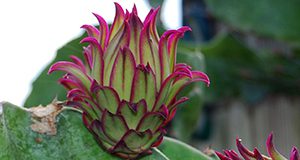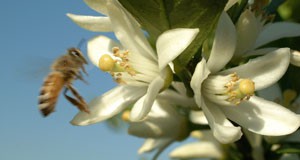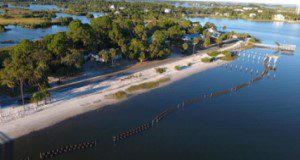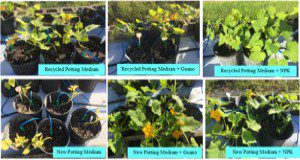This publication series is designed to equip leaders with strategies and tactics to use when they are tasked with having a difficult conversation. When approaching difficult conversations, leaders are encouraged to examine themselves prior to engaging in a hard conversation, because ultimately, a person can only change themself. In this series, the first topic to explore is preparing for the conversation. The components of proper preparation include clearly defining the issue and considering the motive behind the conversation. This new 3-page publication of the Department of Agricultural Education and Communication was written by Christy Chiarelli.
https://edis.ifas.ufl.edu/wc378
Management of Citrus Tree Canopies for Fresh-Fruit Production
Canopy management is a useful tool to induce precocity and maintain high production of optimum-sized, high-quality fruit. The aim of this new 8-page publication of the UF/IFAS Department of Soil and Water Sciences is to provide growers with practical tools with which to manage their trees for maximum fresh-fruit yield, quality, and profitability. Written by Andrew Krajewski, Arnold Schumann, Tim Ebert, Chris Oswalt, Rhuanito S. Ferrarezi, and Laura Waldo.
https://edis.ifas.ufl.edu/ss698
Cottage Food in Florida
In Florida, individuals can manufacture, sell, and store specific types of cottage food products in their primary home kitchen in accordance with Florida Statute 500.80. This new 3-page fact sheet, written by Sarah M. Ellis, Jennifer Hagen, and Matthew D. Krug and published by the UF/IFAS Food Science and Human Nutrition Department, provides basic information and resources for clientele who are interested in starting a food-based business out of their home kitchen. This document is one in a “Florida Food Entrepreneur” series, which seeks to assist new and established food entrepreneurs by providing information on topics relevant to food-based businesses.
https://edis.ifas.ufl.edu/fs425
Publicly Available Geographic Information Sources and Common Analysis Tools
Geographic information and geospatial data are vital in many practical fields, including precision agriculture, natural resources management, flood zone mapping and management, and environmental assessment. This 6-page publication introduces publicly available geospatial data, including elevation, land use, soil, satellite imagery, and other thematic maps and GIS software commonly used in spatial analysis. Written by Satbyeol Shin and Young Gu Her, and published by the UF/IFAS Department of Agricultural and Biological Engineering, January 2021.
https://edis.ifas.ufl.edu/ae550
Planning and Establishing On-Farm Field Trials
Planning and preparation can increase chances of successful outcomes from demonstration plots. This 5-page publication focuses on guiding the successful establishment of demonstration trials and is targeted to county, regional, and state specialized Extension faculty who aim to develop on-farm research and demonstration sites as part of their programs. Written by Marcelo Wallau, Esteban Rios, and Ann Blount, and published by the UF/IFAS Agronomy Department, January 2021.
https://edis.ifas.ufl.edu/ag447
The Ecology of Charophyte Algae (Charales)
Charophytes are a group of green algae within the order Charales. This 4-page publication provides an overview of charophyte ecology, habitat requirements, and status in the state of Florida. Written by Maximiliano Barbosa, Forrest Lefler, David E. Berthold, and H. Dail Laughinghouse IV, and published by the UF/IFAS Agronomy Department, January 2021.
https://edis.ifas.ufl.edu/ag448
The Genetics of Resistance to Gastrointestinal Parasites in Florida Native Sheep
This 3-page publication provides a brief overview of resistance to gastrointestinal nematode infections in Florida Native sheep. Written by Zaira M. Estrada Reyes, Owen Rae, Carol Postley, and Raluca G. Mateescu, and published by the UF/IFAS Department of Animal Sciences, August 2020.
https://edis.ifas.ufl.edu/an361
An Introduction to USGS Topo Maps
Topographic maps provide both a detailed and accurate representation of cultural and natural features on the ground and a quantitative representation of relief, usually using contour lines. They can be used to address spatial questions in disciplines related to natural resources, hydrology, forestry, agriculture, or ecology. In 1879, the United States Geological Survey began to map the topography of the United States, producing new map versions of each area at semi-regular time intervals. US Topo maps are the current generation of USGS topographic maps. Unlike traditional topographic maps, the US Topo product is automatically generated from national map databases with topographic maps and produced every three years for all 48 of the contiguous United States, Hawaii, and the United States territories. They are published as freely available geospatial PDF documents that facilitate coordinate readings and spatial measurements (e.g. distance, area) through built-in georeferencing technology. This 7-page fact sheet written by Hartwig H. Hochmair and Adam R. Benjamin and published by the UF/IFAS School of Forest Resources and Conservation focuses on US Topo quadrangle download procedures and layer structure.
https://edis.ifas.ufl.edu/fr342
The Passion Fruit in Florida
Passion fruit is a short-lived evergreen perennial vine that produces an aromatic and tropical-tasting fruit. This new 13-page publication of the UF/IFAS Horticultural Sciences Department provides a description of passion fruit and its various species and cultivars, as well as a guide to culture and management, harvest and storage, its pests and diseases, and food and marketing. Written by Mark Bailey, Ali Sarkhosh, Amir Rezazadeh, Joshua Anderson, Alan Chambers, and Jonathan Crane.
https://edis.ifas.ufl.edu/hs1406
Pitaya (Dragon Fruit) (Hylocereus undatus) Pests and Beneficial Insects
Pitaya or dragon fruit is a recent crop in south Florida. Dragon fruit has grown rapidly and shows a good potential for commercialization. This 13-page fact sheet written by Daniel Carriollo, Rita Duncan, and Jorge E. Peña and published by the Entomology and Nematology Department lists some of the pests and beneficial insects associated with this promising fruit crop and includes a section on control, precautions, and restrictions.
https://edis.ifas.ufl.edu/in1292
Useful Image-Based Techniques for Manual and Automatic Counting Using ImageJ for Horticultural Research
Counts (e.g., number of leaves, fruits, seeds, or plants) are a common type of data gathered in horticultural research. In many instances, using ImageJ can increase the ease and accuracy of gathering count data. When image processing can easily separate objects of interest from the background, automatic counting with ImageJ can eliminate tedious manual counting processes. Furthermore, additional plant growth data, such as leaf area, plant width, and canopy area, can be collected from the same image. The image processing and analysis techniques introduced in this article are easily accessible and simple to use and thus can be adopted not only by researchers, but also by Extension agents and students. This new 10-page publication of the UF/IFAS Horticultural Sciences Department is part of a series introducing various image-based measurements with ImageJ for horticultural research. Written by Lillian Pride and Shinsuke Agehara.
https://edis.ifas.ufl.edu/hs1405
Minimizing Honey Bee Exposure to Pesticides
To safely solve a pest problem, growers and pesticide applicators must be aware of the potential impacts of some pest-control strategies on bees, other pollinators, and beneficial arthropods. This 14-page fact sheet written by J. D. Ellis, J. Klopchin, E. Buss, and others and published by the UF/IFAS Entomology and Nematology Department explains the issue and provides strategies to protect honey bees and other beneficial insects from pesticides.
https://edis.ifas.ufl.edu/in1027
Living Shoreline Monitoring: How do I evaluate the environmental benefits of my living shoreline?
Living shorelines are structures made of natural materials such as oyster shell, sand, mangroves, salt marsh plants, and other organic materials built to protect properties from erosion. In addition to increasing shoreline stability, living shorelines enhance many valuable ecosystem functions. In this new 11-page publication of the UF/IFAS Department of Soil and Water Sciences, we provide homeowners, land managers, and Extension agents materials lists, protocols, and data sheets for measuring change in ecosystem function. Measuring and interpreting these measurements will help evaluate living shorelines projects as well as provide the foundation for monetarizing the value of these structures. Written by Laura K. Reynolds, Natalie C. Stephens, Savanna C. Barry, and Ashley R. Smyth.
https://edis.ifas.ufl.edu/ss694
The Road to Recovery #3: Facilitating Community Resilience for Effective Pandemic Response
This third publication in the Road to Recovery series provides information and recommendations to support Extension professionals’ ability to facilitate capacity building and resilience development for communities during COVID-19 and potential future pandemic situations. This new 5-page publication of the UF/IFAS Department of Agricultural Education and Communication was written by Cody Gusto, Colby Silvert, and John Diaz.
https://edis.ifas.ufl.edu/wc380
The Road to Recovery #1: Introduction
This first publication in the Road to Recovery series provides a brief introduction to some core concerns and considerations for Extension professionals as they adapt their outreach, education, and evaluation efforts during a pandemic and recovery. This new 3-page publication of the UF/IFAS Department of Agricultural Education and Communication also includes an overview of the subsequent articles in the Road to Recovery series. Written by Cody Gusto, Colby Silvert, and John Diaz.
https://edis.ifas.ufl.edu/wc379
Downy Mildew of Lettuce in Florida
Lettuce Downy Mildew (LDM), caused by the oomycete Bremia lactucae, is the most important disease of lettuce worldwide. LDM has a direct effect on both yield quantity and quality because it may infect lettuce at any growth stage, affecting the marketable portion of the crop. This new 6-page publication of the UF/IFAS Horticultural Sciences Department introduces the LDM disease in Florida lettuce and available control methods and strategies. This publication also introduces the work on LDM in the UF/IFAS Lettuce Breeding Program, which was created to release cultivars adapted to Florida conditions. Written by Lis Rodrigues-Porto, Richard N. Raid, and Germán V. Sandoya.
https://edis.ifas.ufl.edu/hs1403
Use of Recycled Potting Medium for Containerized Production of Squash
Vegetable growers are keen on cost-cutting measures to increase profitability. Containerized vegetable production can be done in a shade-house or garden, and it often requires commercial potting media. Although expensive, potting media are lightweight and provide high water- and nutrient-holding capacities, and thus they are widely used by growers. Growers often discard or compost the potting media after a single season due to issues such as diseases, pests, and weeds. However, old potting media could be reused for containerized production if appropriately sterilized and amended with fertilizer salts. The current study was conducted to determine the feasibility of using sterilized recycled potting medium amended with fertilizer salts for containerized production of squash. This new 4-page publication of the UF/IFAS Horticultural Sciences Department was written by Marie Dorval, Riphine Mainviel, Vincent Michael, Yuqing Fu, Bala Rathinasabapathi, and Geoffrey Meru.
https://edis.ifas.ufl.edu/hs1404
Fondos de Inversion: Un Glosario para Principiantes
El mejor momento para comenzar a invertir o ahorrar es ayer, ya sea para la jubilación, para enviar a su hijo o hija a la Universidad o para el pago inicial de una casa. Para poder tomar una decisión acertada sobre que vehículos financieros escoger para una cartera de inversiones o plan, es primero fundamental conocer las opciones disponibles en el mercado y entender los mecanismos y principios detrás de cada uno de estos vehículos de inversión. Hay libros enteros escritos sobre estos temas, pero con el propósito de este artículo es proporcionar un glosario breve, pero completo de los fondos principales de inversión financiera. This 3-page document is the Spanish version of FCS3352, Major Asset Classes: A Brief Glossary. Written by Jorge Ruiz-Menjivar, Nelly Nelson, and Jarrett Tsai, and published by the UF/IFAS Department of Family, Youth and Community Sciences, December 2020.
https://edis.ifas.ufl.edu/fy1494
Transitioning from Conventional to Organic Farming Using Conservation Tillage
Organic farming is one of the fastest-growing segments of the agricultural industry in the United States and in Florida. Conservation tillage is often employed to reduce soil erosion, improve physical and biological properties of soil, and increase water use efficiency. This 5-page article aims to provide recommendations to row crop farmers who wish to implement conservation tillage practices during their transition to a certified organic system. Written by D. L. Wright, J. Moyer, D. Treadwell, I. M. Small, and S. George, and published by the UF/IFAS Agronomy Department, revised November 2020.
https://edis.ifas.ufl.edu/ag246
Nematode Management in Cole Crops
Many different plant-parasitic nematodes cause yield loss in cabbage, broccoli, collards, and other valuable Florida cole crops. This 13-page fact sheet written by Z. J. Grabau and J. W. Noling and published by the UF/IFAS Entomology and Nematology Department lists common symptoms, explains how to submit samples to a nematology lab such as the UF Nematode Assay Lab for diagnosis, and describes key cultural practices to help agricultural professionals spot and manage nematode problems in cole crops.
https://edis.ifas.ufl.edu/ng024


















